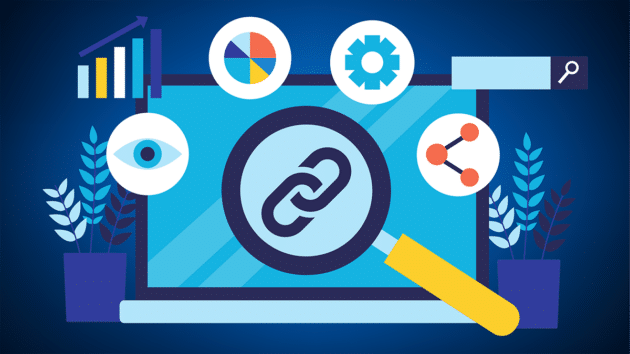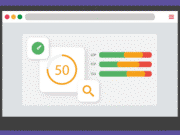Navigating the digital landscape can be an exciting journey, especially when it comes to understanding website traffic. This vital metric, representing the number of people visiting a webpage, serves as the pulse of any online platform or business. And just like a bustling city, website traffic isn’t one-size-fits-all; it’s a diverse ecosystem of various types.
Our focus in this article? To shed light on these different website traffic types: direct, organic, paid, social, and referral. We’re going to dive deep into each category, helping you grasp their unique characteristics and advantages. With this knowledge in your digital toolkit, you’ll be empowered to craft effective strategies, tailor-made to enhance your website’s visibility and drive its growth.
So, are you ready to embark on this enlightening expedition? Let’s unravel the mystery of website traffic together, exploring how these different types can shape your digital footprint and unlock your online success.
1. Direct Traffic

Direct traffic represents a type of site visitation that is distinctly straightforward. It occurs when a visitor arrives directly at your website.
This can happen in several ways. For example, when a user types your website URL into their browser’s address bar or clicks on a bookmark they’ve saved, it is counted as direct traffic.
Interestingly, if a user clicks a link from a non-web document – say, a PDF or Word document – it’s also considered direct traffic. This is because these clicks come without the assistance of a search engine or another website acting as an intermediary.
The importance of direct traffic is often highlighted in digital marketing. It signifies a certain level of brand awareness and loyalty among your audience.
When people choose to visit your website directly, it shows they already know about your brand and are interested enough to bypass search engines or other websites.
In this context, direct traffic can be viewed as a strong indicator of brand recognition and customer loyalty. The higher the volume of direct traffic, the stronger your brand’s image is likely to be in the minds of consumers.
How to boose direct traffic?
To increase direct traffic, businesses should focus on strategies that enhance brand visibility and recall. These can range from offline marketing initiatives to memorable digital campaigns. Moreover, a well-executed email marketing strategy can keep your brand fresh in people’s minds, nudging them to visit your website directly.
In sum, direct traffic, while seemingly simple, plays a significant role in digital marketing. It reflects brand recognition, customer loyalty, and direct audience engagement, making it a crucial component of your website’s overall traffic.
Related: 16 Fantastic SEO Tips for Bloggers to Drive Traffic More.
2. Organic Traffic

Organic traffic, highly coveted by digital marketers and website owners, refers to the influx of visitors who land on your site as a result of unpaid search results. These users typically enter a query into a search engine like Google, Bing, or Yahoo, and are led to your site because the search engine algorithm has determined that your site offers the most relevant response to their query.
For instance, a user searching for “best vegan recipes” might land on your food blog because your well-optimized vegan recipe posts were deemed highly relevant by Google’s algorithm.
Organic traffic is a testament to a website’s search engine optimization (SEO) effectiveness. It showcases the site’s ability to align with the search engine’s complex algorithms and successfully cater to user intent.
When a website captures organic traffic, it signals that it is a trusted source of information, service, or product, as it has been selected by an unbiased, highly sophisticated algorithm. This trustworthiness is a significant factor in the online world, where credibility is crucial for user engagement and conversion.
Moreover, organic traffic is often deemed cost-effective, especially when contrasted with paid traffic. It requires an initial investment in terms of creating high-quality content and optimizing your website for search engines. But, it does not involve any cost-per-click or cost-per-impression fees. Once your website ranks high in organic search results, it can continue to attract visitors without additional advertising costs.
How to boost organic traffic?
To boost organic traffic, the application of efficient SEO tactics is crucial. This involves keyword optimization, a process that requires identifying and embedding pertinent keywords into your website’s content. For instance, a neighborhood bakery could leverage keywords such as “freshly baked sourdough in [city name]” to draw in local organic traffic. Moreover, using a site checker tool like pr-cy.io can help enhance your SEO efforts by providing valuable insights and data.
Additionally, on-page and off-page SEO practices, include meta description optimization, image alt text usage, internal linking, mobile optimization, and backlink building. These can significantly boost organic traffic. For instance, a tech blog might gain organic traffic by guest posting on larger tech sites and including backlinks to their own blog.
Finally, consistently creating high-quality, engaging content that offers value to your audience is a surefire way to improve organic traffic. This could involve creating comprehensive guides, hosting webinars, sharing personal stories, or publishing industry research. All are aimed at providing value to your audience and answering their search queries.
In essence, organic traffic is a key indicator of your website’s health, user relevance, and overall digital marketing success. It reflects the trust search engines place in your site, which, in turn, enhances your credibility among users. It improves not just your visibility, but also your conversion rates.
3. Paid Traffic

Paid traffic, one of the significant types of website traffic, is generated through paid online advertising campaigns. This encompasses visitors who arrive at your site by clicking on an advertisement that you’ve paid for. While organic traffic is earned, paid traffic, as the name suggests, is bought. It’s a faster, more controlled way of driving visitors to your website. It also allows businesses to target specific demographics effectively.
There are multiple sources of paid traffic, each offering unique advantages.
PPC
Firstly, Pay-Per-Click (PPC) advertising is one of the most common forms of paid traffic. In PPC campaigns, such as those run through Google Ads or Bing Ads, advertisers bid on keywords relevant to their target audience.
For example, an online clothing retailer might bid on keywords like “summer dresses online” or “buy men’s shoes” to attract potential customers. When users search these terms, the retailer’s ad may appear in the search results, leading to increased visibility and potential clicks.
Social media advertising
Another substantial source of paid traffic is social media advertising. Platforms like Facebook, Instagram, LinkedIn, and Twitter offer robust advertising tools. These tools allow businesses to reach their audience based on demographics, interests, behaviors, and more. For instance, a local restaurant might run a Facebook Ad campaign targeting users within a certain radius who have expressed interest in dining out.
Display advertising
Display advertising, where ads are placed on relevant third-party websites, is another form of paid traffic. These ads, often in the form of banners, pop-ups, or interstitials, can increase brand visibility and attract potential customers. An online bookstore, for instance, might place display ads on literary review websites to attract book lovers.
Native advertising
Native advertising and sponsored content are also popular sources of paid traffic. They blend in with the website or platform’s regular content, offering a more seamless user experience. For example, a skincare brand might sponsor a blog post on a popular beauty blog, subtly promoting its products within the content.
Paid traffic can offer immediate results and is highly customizable, making it an appealing option for many businesses. It requires a financial investment. But, the precise targeting and speed of results can make it a worthy addition to your digital marketing strategy. The key is to understand your audience, choose the right platforms and ad formats, and continually monitor and adjust your campaigns for optimal results.
See also: Converting Existing Traffic: 5 Effective Tools to Skyrocket Conversions.
4. Social Traffic

Social traffic is the portion of website traffic that arrives through links shared on social media platforms. When a user clicks a link on a Facebook post, a Tweet, an Instagram story, a LinkedIn article, or any other form of social media content, and lands on your website, that is considered social traffic. These types of website traffic are indicative of your brand’s social media presence and the effectiveness of your social media marketing strategies.
Various social media platforms serve as sources of social traffic, each with its unique audience and content style.
Facebook, with its vast and diverse user base, is a major source of social traffic for many businesses. Posts on your business’s Facebook Page, shared articles, and sponsored posts can all drive traffic to your website. For instance, a travel agency might share blog posts about various travel destinations, enticing readers to visit their website for more information.
Twitter, with its focus on real-time conversation, can also generate substantial social traffic. Tweets, retweets, and Twitter Ads can all guide users to your site. An example could be a news website tweeting out its latest articles, attracting readers who want up-to-date information.
Instagram is a visually-driven platform. It can generate social traffic through bio links, swipe-up links in Stories (for accounts with 10k+ followers), and shopping tags. For instance, a fashion brand might post pictures of its new collection and use shopping tags to direct users to its online store.
LinkedIn, a professional networking site, can drive B2B social traffic through shared articles, posts, and LinkedIn Ads. A digital marketing agency, for example, could share insightful articles about marketing trends, enticing other businesses to visit their site for professional services.
Pinterest is a platform centered around ideas and inspiration. It can also drive significant social traffic, especially for businesses in the creative, DIY, fashion, and food sectors. A DIY blog, for example, could share their craft ideas as Pins, leading interested users to their website for full instructions.
Generating social traffic requires a strategic and engaging social media presence. Regularly posting relevant content, interacting with your audience, leveraging social media advertising, and keeping up with platform trends and features can all increase social traffic. Social traffic not only increases your website’s visibility but also allows for direct engagement with your audience, fostering a sense of community around your brand.
5. Referral Traffic

Referral traffic is generated when a user clicks a link on another website and lands on your site. It’s essentially a vote of confidence from one website to another, helping to build trust and credibility.
Referral traffic is valuable because it helps build partnerships and networks. When other sites link to yours, it not only brings in new visitors but also boosts your reputation in the digital ecosystem.
How to increase referral traffic?
To increase referral traffic, focusing on building quality backlinks is essential. This can be achieved through guest blogging, where you write articles for other websites and include a link back to your site. Additionally, partnering with relevant websites for mutually beneficial link-sharing can also drive more referral traffic.
Related: How to Get More Traffic from Content Marketing?
Conclusion

Understanding the different types of website traffic – direct, organic, paid, social, and referral – is crucial to devising a robust digital marketing strategy. Each type has its unique characteristics, benefits, and strategies for growth. Balancing these different traffic sources can create a diverse and resilient inflow of visitors to your website.
In this fast-evolving digital landscape, the key is to keep learning and adapting. What works today may not work tomorrow. So, continually refining your traffic generation strategies and staying abreast of the latest trends will help maintain a steady flow of visitors to your website.





